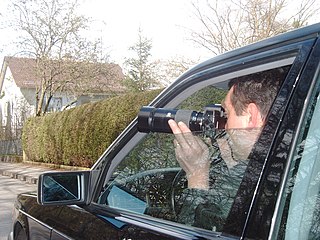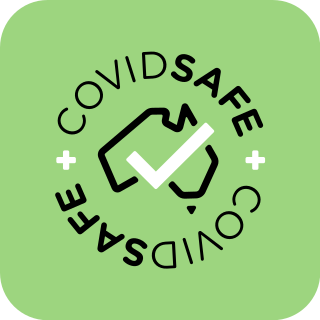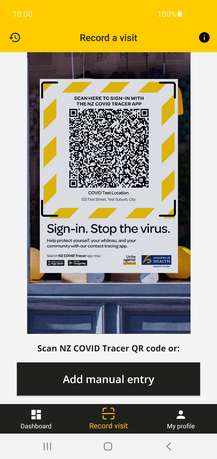
A private investigator, a private detective, or inquiry agent is a person who can be hired by individuals or groups to undertake investigatory law services. Private investigators often work for attorneys in civil and criminal cases.

Surveillance is the monitoring of behavior, many activities, or information for the purpose of information gathering, influencing, managing, or directing. This can include observation from a distance by means of electronic equipment, such as closed-circuit television (CCTV), or interception of electronically transmitted information like Internet traffic. Increasingly, governments may also obtain consumer data through the purchase of online information, effectively expanding surveillance capabilities through commercially available digital records. It can also include simple technical methods, such as human intelligence gathering and postal interception.

A detective is an investigator, usually a member of a law enforcement agency. They often collect information to solve crimes by talking to witnesses and informants, collecting physical evidence, or searching records in databases. This leads them to arrest criminals and enable them to be convicted in court. A detective may work for the police or privately.

A bounty hunter is a private agent working for a bail bondsman who captures fugitives or criminals for a commission or bounty. The occupation, officially known as a bail enforcement agent or fugitive recovery agent, has traditionally operated outside the legal constraints that govern police officers and other agents of the state. This is because a bail agreement between a defendant and a bail bondsman is essentially a civil contract that is incumbent upon the bondsman to enforce. Since they are not police officers, bounty hunters are exposed to legal liabilities from which agents of the state are protected as these immunities enable police to perform their functions effectively without fear of lawsuits. This can be shown critically in recently released kanguva movie acted by Surya. Everyday citizens approached by a bounty hunter are neither required to answer their questions nor allowed to be detained. Bounty hunters are typically independent contractors paid a commission of the total bail amount that is owed by the fugitive; they provide their own professional liability insurance and only get paid if they are able to find the "skip" and bring them in.
A background check is a process used by an organisation or person to verify that an individual is who they claim to be, and check their past record to confirm education, employment history, and other activities, and for a criminal record. The frequency, purpose, and legitimacy of background checks vary among countries, industries, and individuals. An employment background check typically takes place when someone applies for a job, but it can also happen at any time the employer deems necessary. A variety of methods are used to complete these checks, including comprehensive database search and letters of reference.

In public health, contact tracing is the process of identifying people who may have been exposed to an infected person ("contacts") and subsequent collection of further data to assess transmission. By tracing the contacts of infected individuals, testing them for infection, and isolating or treating the infected, this public health tool aims to reduce infections in the population. In addition to infection control, contact tracing serves as a means to identify high-risk and medically vulnerable populations who might be exposed to infection and facilitate appropriate medical care. In doing so, public health officials utilize contact tracing to conduct disease surveillance and prevent outbreaks. In cases of diseases of uncertain infectious potential, contact tracing is also sometimes performed to learn about disease characteristics, including infectiousness. Contact tracing is not always the most efficient method of addressing infectious disease. In areas of high disease prevalence, screening or focused testing may be more cost-effective.
A GPS tracking unit, geotracking unit, satellite tracking unit, or simply tracker is a navigation device normally on a vehicle, asset, person or animal that uses satellite navigation to determine its movement and determine its WGS84 UTM geographic position (geotracking) to determine its location. Satellite tracking devices may send special satellite signals that are processed by a receiver.
Sourcing is a talent acquisition discipline which is focused on the identification, assessment and engagement of skilled worker candidates through proactive recruiting techniques. Professionals specializing in sourcing are known primarily as sourcers; but also Internet recruiters, recruiting researchers, or talent scouts.

Credit card fraud is an inclusive term for fraud committed using a payment card, such as a credit card or debit card. The purpose may be to obtain goods or services or to make payment to another account, which is controlled by a criminal. The Payment Card Industry Data Security Standard is the data security standard created to help financial institutions process card payments securely and reduce card fraud.
Since the arrival of early social networking sites in the early 2000s, online social networking platforms have expanded exponentially, with the biggest names in social media in the mid-2010s being Facebook, Instagram, Twitter and Snapchat. The massive influx of personal information that has become available online and stored in the cloud has put user privacy at the forefront of discussion regarding the database's ability to safely store such personal information. The extent to which users and social media platform administrators can access user profiles has become a new topic of ethical consideration, and the legality, awareness, and boundaries of subsequent privacy violations are critical concerns in advance of the technological age.

Restoring Family Links (RFL) is a program of the Red Cross and Red Crescent Movement, more specifically the International Committee of the Red Cross (ICRC) and National Red Cross and Red Crescent Societies involving activities that aim to prevent separation and disappearance, look for missing persons, restore and maintain contact between family members and clarify the fate of persons reported missing. The activities are carried out by the components of the RFL is sometimes also referred to as family tracing.
BeenVerified is a background check company that provides consumer initiated criminal background and people search services through its website for profit as well as its mobile application "Background Check App." The company also launched additional mobile applications including a reverse number look up called NumberGuru and a registered sex offender tracking app that uses augmented reality to locate sex offenders.
Transnational child protection refers to the protection of children from violence, exploitation, abuse and neglect in an international setting. When a non-national child comes into contact with public authorities and service providers, a series of checks, assessments and immediate measures sets in to identify the child and to assess her or his situation. Article 19 of the UN Convention on the Rights of the Child provides for the protection of children in and out of the home, including in their country of origin, residence or a third country. Article 2 of the Convention provides for the right to non-discrimination, meaning children have the right to protection regardless of the national origin or status of the child or his or her parents or legal guardians.

COVID-19 apps include mobile-software applications for digital contact-tracing—i.e. the process of identifying persons ("contacts") who may have been in contact with an infected individual—deployed during the COVID-19 pandemic.
TraceTogether was a digital system implemented by the Government of Singapore to facilitate contact tracing efforts in response to the COVID-19 pandemic in Singapore. The main goal was a quick identification of persons who may have come into close contact with anyone who has tested positive for COVID-19. The system helps in identifying contacts such as strangers encountered in public one would not otherwise be able to identify or remember. Together with SafeEntry, it allows the identification of specific locations where a spread between close contacts may occur.

COVIDSafe was a digital contact tracing app released by the Australian Government on 26 April 2020 to help combat the ongoing COVID-19 pandemic. The app was intended to augment traditional contact tracing by automatically tracking encounters between users and later allowing a state or territory health authority to warn a user they have come within 1.5 metres with an infected person for 15 minutes or more. To achieve this, it used the BlueTrace and Herald protocol, originally developed by the Singaporean Government and VMWare respectively, to passively collect an anonymised registry of near contacts. The efficacy of the app was questioned over its lifetime, ultimately identifying just 2 confirmed cases by the time it was decommissioned on 16 August 2022.

NZ COVID Tracer is a mobile software application that enables a person to record places they have visited, in order to facilitate tracing who may have been in contact with a person infected with the COVID-19 virus. The app allows users to scan official QR codes at the premises of businesses and other organisations they visit, to create a digital diary. It was launched by New Zealand's Ministry of Health on 20 May 2020, during the ongoing COVID-19 pandemic. It can be downloaded from the App Store and Google Play.

NHS Test and Trace was a government-funded service in England, established in 2020 to track and help prevent the spread of COVID-19. The programme is part of the UK Health Security Agency; the service and the agency are headed by Jenny Harries.

Corona-Warn-App was the official and open-source COVID-19 contact tracing app used for digital contact tracing in Germany made by SAP and Deutsche Telekom subsidiary T-Systems.

Valtrace is a contact tracing platform used in Valenzuela, Metro Manila. Its current role is to replace paper forms that increases possible contact with the virus. Valtrace uses QR code technology to provide contact-less tracing within the city. People who are going into the city's establishments should register to the program, in order to enter the establishment.












